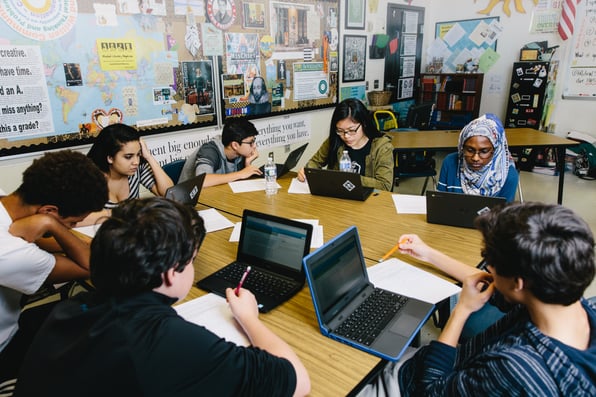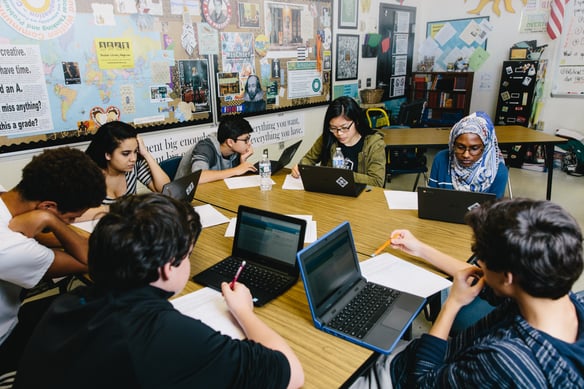
Why Differentiation is the Most Effective SAT Prep
Preparing students for the rigors of the Redesigned SAT.

Differentiation has always been a hallmark of skillful teaching, but it's a must in an increasingly diverse 21st century classroom. A robust cache of research proves that practical differentiation benefits all students—not just those far above or behind grade level—in different ways. One large study found that letting gifted students work on a math unit early and engage in a small group, cooperative learning increased achievement and performance. At the same time, providing targeted instruction to other groups using modifications such as manipulatives and visual aids increased feelings of inclusivity and ultimately improved performance.
Differentiation can feel more difficult for high school teachers, who are typically abiding by a rigorous and prescribed college prep curriculum and bearing the brunt of preparing students for college entrance exams. Although differentiating instruction at the high school level can be time-consuming for teachers, making it a regular practice will benefit students as they prepare for the rigors of the Redesigned SAT.
Differentiation and SAT Prep
Differentiation is the most effective SAT prep. The SAT is a diverse test that includes math from pre-algebra through pre-calculus, readings from every content area, and an analytical essay.
The SAT is also one of the only tests where students can score well without doing every question. (Since there is no guessing penalty, make sure to fill in every bubble, even if it is just a guess.) Most students will not finish the test if they try and work through every single question in order. Success on the SAT depends on students doing well on the issues that are at their level, at a pace that allows them to answer questions successfully. Differentiation is crucial in ensuring that students are practicing content and skills appropriate for their reading level, cognitive development, and language proficiency.
Making Differentiation Work In Your Classroom
Differentiation takes many forms, but it is typically executed by varying either content (what students learn), the process (how students learn), or the product (how students demonstrate their knowledge). ThinkCERCA can help you build a rigorous, differentiated curriculum that supports SAT prep. Each lesson includes a set of authentic texts differentiated for ten readiness levels centered around a common key question. This allows students to read a unique text at their level and still contribute meaningfully to a class discussion. Allow some students to read independently while others read aloud or listen to the narrated audio support included with every lesson. Differentiate by allowing students to submit different final products—either a full five-paragraph essay or a comprehensive outline using one of ThinkCERCA’s graphic organizers.
Learn more about how ThinkCERCA supports the SAT.

As Senior Editor at ThinkCERCA, Catherine brings a variety of experience in classroom teaching, test prep, and content development to her role at ThinkCERCA.
Catherine began her career in education as a Match Corps Urban Education Fellow in Boston, working as a full-time tutor and teaching assistant in a high performing charter school. After completing her fellowship year, she taught science at KIPP WAYS Academy in Atlanta, GA. She also spent two summers teaching high school biology at Deerfield Academy in Massachusetts.
Catherine earned a masters in education from Teachers College at Columbia University. Her research focused on the cognitive underpinnings of teaching and learning. After working as a freelance content developer and editor, she is thrilled to join the team in a full-time capacity.
